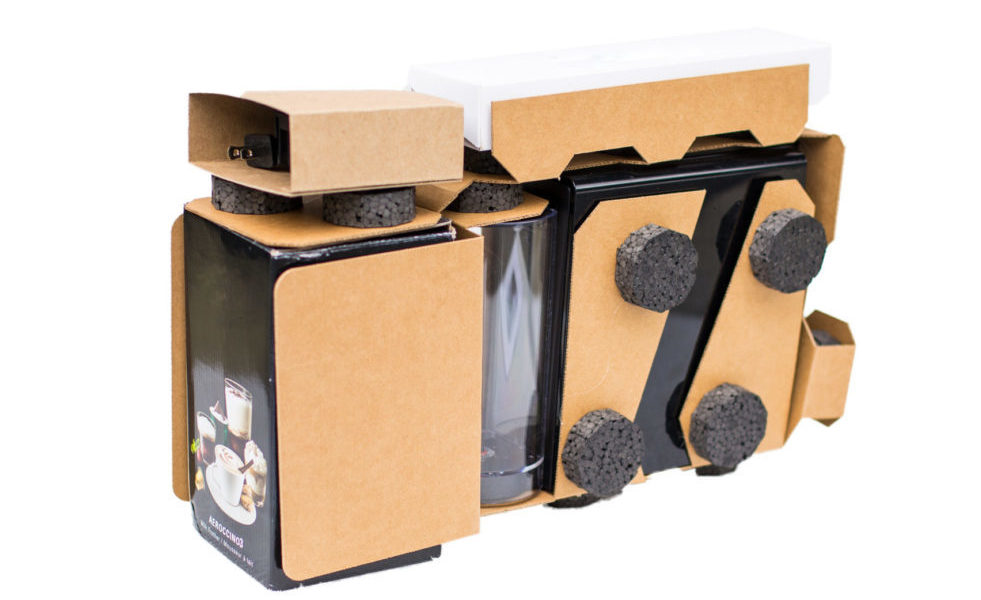What happens when you try to recycle polystyrene packaging?
Discussing the danger and difficulties of recycling EPS foam.
Reduce. Reuse. Recycle.
Recycling emerged in the 1970s as an answer for pollution, a weapon against the fear of global warming. Communities established recycling facilities in efforts to stem the tide of ecological damage. Companies made sure to emphasize when their materials could be recycled. And consumers started checking their trash for the little triangle on their products.
Nowadays, companies use the term ‘recyclable’ loosely and it fails to adequately describe the complexity of the overall recycling process. Many corporations continue to use unsustainable, low cost materials in their manufacturing, leaving consumers at a loss for how to actually recycle or what materials are, in fact, truly recyclable.
Polystyrene is a problem
Polystyrene, also known as Styrofoam, still poses a serious environmental threat, despite being advertised as recyclable. Companies label polystyrene as ‘recyclable,’ while, in reality, there are a mountain of obstacles and issues that prevent the material from actually being successfully recycled.
For consumers, Styrofoam CANNOT be recycled if:
- Your local recycling facility does not accept #6 materials
- Your local recycling facility does not accept expanded polystyrene
- There is any food residue on it at all
- It is any color other than white
- It contains any additional products or residue from products on it, ie glue, tape, labels
Why the numbers inside the triangle matter
In 1988, the Plastics Industry Association developed the modern Resin Identification Code (RIC), which delineates 7 distinct types of plastic material in order to “facilitate recycling of post-consumer plastics.” In plain terms, the bigger the number – the harder a product is to recycle.
Polystyrene earns itself a 6 on the scale, indicating that most communities across the United States do not have the facilities capable of recycling it. Most consumers cannot simply toss out their Styrofoam packaging and, as a result, white polystyrene foam flows into landfills at a rate of 2.3 million tons a year.
Issue of cost efficiency
Expanded polystyrene presents a problem in and of itself, as expanded foam pellets have already reached their final state. Thus, they cannot be recycled into any other form, only melted in industrial incinerators or shredded into smaller pieces – a costly process to perform on a large scale.
This marks a significant obstacle, as cost efficiency governs the large-scale recycling system, determining which materials are worth the effort to repurpose and which are not. Polystyrene is significantly cheaper to manufacture new than to complete the expensive and energy intensive process to recycle. As a result, the practicality of recycled polystyrene becomes a pointless and costly burden and the market for EPS recycling – non-existent.
Contaminates everything around it
Styrofoam actually causes more harm than good when introduced to the recycling process. Polystyrene foam forces recycling centers to reject “entire loads of recycling…making it harder to recover accepted recycling material,” explains the recycling organization, It’s All You.
Recycling contamination is a serious issue through the U.S. recycling system and polystyrene remains one of the top culprits. For example in California, most curbside recycling facilities refuse to accept “polystyrene and other non-recyclable plastics because they contaminate recycling.”
Yet, for years the overwhelming majority of consumers have tossed Styrofoam into their recycling bins without knowing its full impact. This disrupts the successful recycling of truly sustainable materials, creating serious problems where there were none before.
Make the switch to eco-friendly materials

There are packaging materials that achieve the same cushioning performance as Styrofoam without a negative impact on the environment. EPE utilizes 100% curbside recyclable materials, which are regularly accepted at community recycling centers across the United States.
The key to designing a truly sustainable packaging solution is to first obtain a complete understanding of a company’s ecosystem from beginning to end. That helps us determine an alternative material to polystyrene that offers better product protection and allows us to optimize material usage. Through our innovative packaging designs, we have been able to reduce foam usage by 80% compared to traditional packaging, with an alternative packaging material that is 100% recyclable.
Make the switch and save the world. Talk to one of our professional packaging experts today about finding a perfectly-suited sustainable packaging solution for your business.